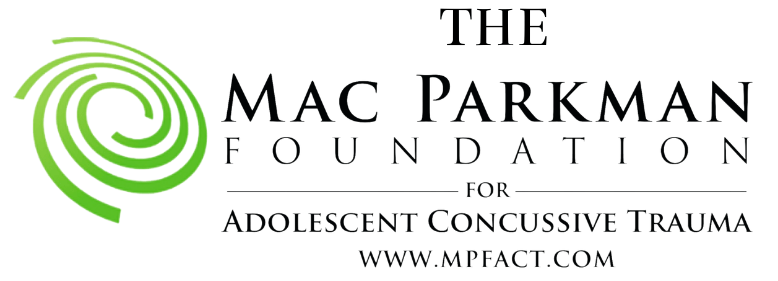Throughout the journey since Mac passed, we have gained more and more awareness of the real dangers facing our kids. Everyone focuses on concussions and for a good reason. Concussions are immediately diagnosed; they hurt our kids, and they are shocking to watch. The dilemma is that it is not concussions that are hurting our kids. When concussions are diagnosed and properly managed, the brain can heal. However, it’s the sub-concussive activity that is damaging our kid’s brains. Why? Because it CANNOT BE DIAGNOSED, it doesn’t seem to hurt our kids; they don’t complain about small minor hits like heading a soccer ball, or getting their helmet dinged in football practice, or falling to the ice in hockey after a check. But these sub concussions happen to EVERY kid that plays contact sports. That’s right, your kid is experiencing sub concussions almost every time they are on the field on skis/skateboard, etc.
The problem which we will repeat over and over again is that the effect of this aggregated exposure is not understood by the scientific and medical communities, but there is agreement that, over time, continued exposure to sub-concussive activity is damaging to a child’s brain. Also, the younger the brain is, it will sustain more damage over time and eventually; it becomes irreversible and leads to mental illness and Chronic Traumatic Encephalopathy. The longer the child is exposed to years of playing, the more damage takes place. The more contact sports activities a child takes part in, back-to-back sports, traveling teams, municipal sports, etc, the more damage takes place. With every child that takes part in contact sports, they become a potential victim of sub-concussive trauma. It’s time that parents are informed of the dangers of this non-measurable, rarely reported, and poorly understood medical issue and can make informed decisions.
So why is this not common knowledge? For example, the awareness parents, trainers, coaches, and medical staff have on concussions? There has been relatively little research done on the subject, although, to us, it represents a larger threat to the overall concentration of child athletes than anything else, even concussions. First, there is hardly any information on the issue. As mentioned in these blogs, hardly any research or information is present on this problem. Even as inferred as the problem of sub-concussive trauma is almost impossible to diagnose unless a child has access to sensors that can record every hit, (hard to imagine in sports such as soccer and wrestling) and innovative medical staff. There is little awareness of this condition. A review of the Athletic Training curriculum and from the major colleges shows minimal training on concussion therapy alone and no mention of sub-concussive, but at the end of the National Athletic Trainers’ Association Position Statement: Management of Sport Concussion (you have to read to page 256) they do state that the long-term risks of sub-concussive trauma can lead to CTE and declines in cognitive health (should say mental health as well) but state that the relationship between concussions, sub-concussive activity, and long-term brain health is not clear.
If it’s not clear, but clearly is a threat to our children’s health, why are we pushing the envelope with exposing our children to sub-concussive activity at an age younger than 14, the age when all the experts state a child’s brain is ready to better survive sub-concussive trauma.
Back to my point, if 256 pages of the document sent to me in 2017 cover concussions, which are clearly a danger to our kids, why don’t they also focus on the other issue at hand, that while SOME kids get concussions, ALL kids playing contact sports get sub concussions. We cannot prevent concussions or sub concussions, one is accidental and is incidental, the other is not, it’s a part of playing the sport and will happen. We need to better protect our children through the knowledge we have gained by limiting the amount of sub-concussive exposure they have.
